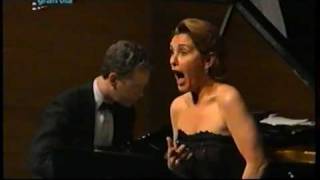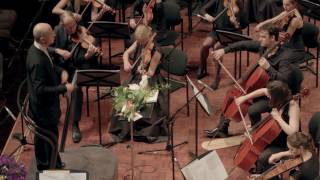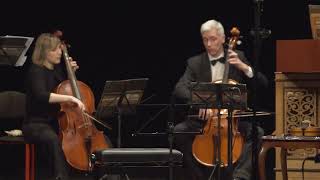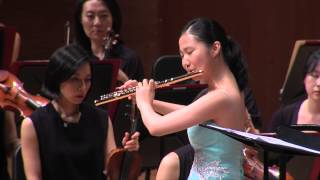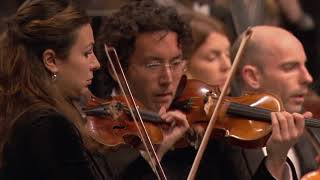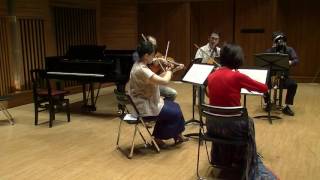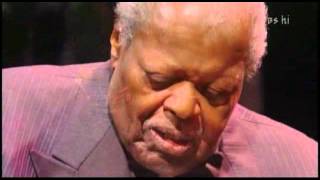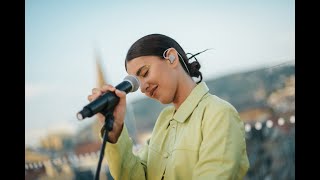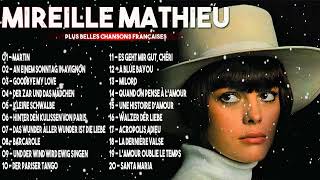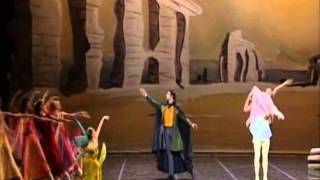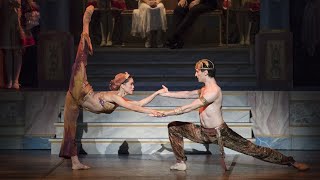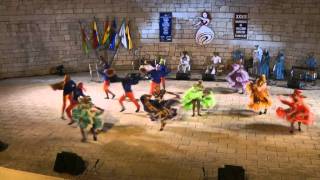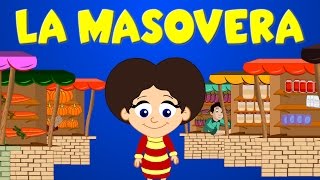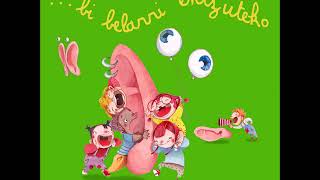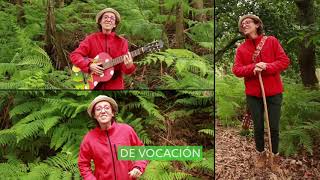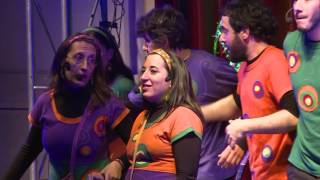Recommended music videos for initiation to classical music
A toccata (from Italian toccata, "to play") is a piece of Renaissance and Baroque music for keyboard instruments such as the harpsichord or organ, usually in free form and generally emphasizing the performer's skill with a succession of fugal sections alternating with other free-style and improvisational sections. In the more advanced stages of the development of toccatas, these fugal sections will be the culmination and will have relative independence; so that in the 18th century the association of toccata and fugue was common.
The fugue is a musical genre in which musical ideas called subjects are superimposed. Several voices or instrumental lines are structured by imitation or reiteration of the same ones that appear in different keys and in the structured development of the themes presented. When this technique is used as part of a larger piece, it is said to be a fugal section or a fugato ; a short fugue is called a fughetta. Until the end of the Middle Ages the term fugue was widely used to describe canonical structures and works, in the Renaissance it was used to specifically designate works based on imitation. It was not until the 17th century that the term fugue would take on its current meaning.
The Toccata and Fugue in D minor , BWV 565 is a piece of organ music written by Johann Sebastian Bach . The piece opens with a toccata section (0´08´´) , followed by a fugue (2´55´´) that ends in a coda (7´59´´) . The first publication of the piece, in the era of the Bach “renaissance”, was in 1833 , thanks to the efforts of Felix Mendelssohn , who also performed the piece in an acclaimed concert in 1840 ; familiarity with the piece improved in the second half of the 19th century and further in the 20th century with the inclusion of the piece in Walt Disney 's animated film Fantasia (in Stokowski 's orchestral transcription), until this composition came to be regarded as the most famous work in the organ repertoire.
Maria Luisa Veneziano is a pianist, organist, musicologist and radio producer, who graduated in piano at the Conservatorio “S. Cecilia” in Rome with M° Aldo Tramma , in Chamber Music with M° Marco Lenzi and in Musicology with M° Lucia Bonifaci and specialized with Andràs Schiff on the keyboard work of Bach . She continued her studies at the Pontifical Institute of Sacred Music in Rome , at the “ G. Rossini ” in Pesaro , in Paris and in Munich . She has participated as a solo organist in numerous and renowned organ festivals in Ljiublijana, Roccamassima, Emilia Romagna, Teramo, Pesaro, Bergamo, Saint Denis in Paris ... where she enjoys great critical and public success and has collaborated with renowned national and international artists.
Franz Joseph Haydn (1732-1809), Austrian composer whose brother Michael Haydn was also a notable composer, was one of the main pillars on which classicism was based (1750-1810). At the age of six he began his studies of harpsichord and violin. At the age of eight he was admitted as a chorister at St. Stephen's Cathedral in Vienna where he continued his musical studies. After his voice lost, he had to survive by working various jobs, while studying composition by analyzing the works of Carl Philipp Emanuel Bach . He maintained a close friendship with Mozart and was Beethoven 's teacher. He laid the main foundations of the sonata form and the formal structure of the string quartet and the symphony . He died at the age of 77 in Vienna .
The catalogue of Haydn's works . The works of Joseph Haydn are now classified according to the system devised by Anthony van Hoboken. Each work is identified by a Roman numeral corresponding to the category, which in most cases is identified by a genre. Some categories have subdivisions, which are indicated by a lower-case letter followed by an Arabic numeral corresponding to the order of the particular work within the category. These numerals are preceded by the word Hoboken (in memory of the author of the catalogue) and sometimes by Hob (his abbreviation).
Serenade for String Orchestra . This is actually the second movement of the String Quartet Op. 3 No. 5 arranged on this occasion for the String Orchestra of the Nanyang Academy of Fine Arts conducted by Volker Hartung.
Amadeo Vives (1871-1932), a composer born in Barcelona , is the author of numerous songs and more than a hundred stage works, among which Bohemios, Maruxa and, above all, Doña Francisquita stand out, considered among the greatest works of the genre. He began receiving music lessons from his brother at the age of five; later he studied piano, harmony and composition with José Ribera ; he collaborated with Lluis Millet in the foundation of the Orfeó Catalá , which began its journey with Catalan songs harmonized by Amadeo Vives . By the age of fourteen he had composed several sonatas and at the age of 24 he premiered his first opera in Barcelona . Later he moved to Madrid where his stage premieres received successful responses and recognized prestige.
Doña Francisquita is a zarzuela, known as a "lyrical comedy", in three acts, with a libretto by Federico Romero Sarachaga and Guillermo Fernández-Shaw Iturralde , based on the comedy La descongelada by Félix Lope de Vega , with music by the maestro Amadeo Vives ; it premiered at the Teatro Apolo in Madrid on 17 October 1923. It is considered one of the greatest zarzuela works, setting a model within the great genre. The libretto portrays romantic Madrid in a poetic and faithful way, creating pictures of great colour and liveliness, without falling into mere historical recreation, this being a work full of freshness. Due to its characteristics, it can also be defined as a high-quality comic opera.
María Bayo (1961 in Fitero , Navarra/Nafarroa) is a soprano who has developed an outstanding international career as a performer of opera, zarzuela and classical song. Although she was born in a hospital in Tudela , she considers the town of Fitero , where her family lives and with which she maintains a close ties, to be her hometown. She has been awarded the first prize in the Belvedere competition in Vienna , the National Music Prize , the Prince of Viana Prize for Culture ; she has been invested as an elected member of Jakiunde , awarded the Humanities Prize of Eusko Ikaskuntza-Caja Laboral , the Traetta Prize of the Traetta Society, the Cadenas de Navarra Prize ... In 2020 she received the Gold Medal for Merit in Fine Arts .
Today we offer the romance of Doña Francisquita , Song of the Nightingale, accompanied on the piano by Brian Zeger .
Hugo Emil Alfvén (1872 – 1960) was a Swedish composer, conductor and violinist, who was also noted for his work as a painter and writer. He studied at the Royal Conservatory in Stockholm from 1887 to 1891, playing the violin as his principal instrument, and also received private composition lessons from Johan Lindegren . He earned his living playing violin at the Royal Opera in Stockholm and in the Hovkapellet (Swedish court orchestra). From 1897 and for the next ten years he travelled widely in Europe , studying violin technique in Brussels and learning conducting in Dresden . He subsequently became a violinist and professor of composition at the Stockholm Conservatory . Alfvén is one of Sweden 's most important composers, along with Franz Berwald and Wilhelm Stenhammar . Romantic in temperament, notably influenced by Wagner and Strauss , he used Swedish folklore, introducing themes from typically Swedish dances into his rhapsodies. His symphonies, with a classical structure, reveal a skilled orchestrator.
Paavo Järvi (1962) is an Estonian conductor with American citizenship; his father, Neeme Järvi , and his brother, Kristjan Järvi , are also conductors. When he was eight years old, his family moved to the USA , where he completed his first musical studies; although he began his career as a conductor in Sweden with the Malmö Symphony; he has conducted the world's leading orchestras and is currently the principal conductor of the Japanese NHK Symphony Orchestra.
Recommended classical music videos
Giuseppe Torelli (Verona, 1658 - Bologna, 1709) was an Italian composer, violinist and music teacher of the Baroque period . He was the brother of the painter Felice Torelli and is best remembered for his music for stringed instruments and trumpet. He received his first musical training in his hometown under the maestro Giuliano Massaroti . In 1684 he moved to Bologna to study with Giacomo Antonio Perti and on 27 June of that same year he entered the Philharmonic Academy of Bologna as a violinist. Torelli applied the three-movement form (Allegro, Adagio, Allegro) already used by Alessandro Scarlatti to instrumental concertos, and was one of the main proponents of the concerto grosso , whose invention is often attributed to Corelli . He was also a pioneer in the composition of solo concertos for violin and orchestra. A total of 84 works by him are known.
Today the Croatian Baroque Ensemble offers us the Symphony in C by Maestro Torelli , a symphony divided into three sections: I (0´08´´) ALLEGRO .-. II (3´55´´) ADAGIO .-. III (4´15´´) PRESTO.
Wolfgang Amadeus Mozart (1756-1791) is considered one of the three giants of musical composition along with Bach and Beethoven . A child prodigy born in Salzburg (Austria), at the age of six he mastered the keyboard and the violin and began to compose, which led his father, Leopold , to take him on exhausting tours of different European courts. A prolific composer (more than 600 works written from the age of five until his death), he cultivated all kinds of musical genres: piano works, chamber music, symphonies, concertante works, choral works, operas... each and every one of them a masterpiece of their genre. His operas The Magic Flute, Don Giovanni, Così fan Tutte, and The Marriage of Figaro are among the 10 most performed operas in the world. He died in Vienna at the age of 35.
The flute is a type of musical instrument that, due to the simplicity of its construction, may be one of the oldest instruments. The name flute seems to come from the Latin flatulare , which means to blow, to inflate. The body of the instrument has holes that, by opening or closing them, change the length of the vibrating air inside the tube. The holes are sometimes covered directly with the tip of the fingers; in others, with keys. Although it can be made of wood or metal, the flute is classified within the woodwind family , since in woodwind instruments, the sound is produced by the vibration of one or more reeds or sections of the instrument; while in brass instruments, such as trumpets, it is the lips that vibrate to produce sounds.
The Flute Concerto No. 2 in D major, K. 314/285d, is an adaptation of an original oboe concerto written by Wolfgang Amadeus Mozart in 1778. The piece was commissioned by the Dutch flutist Ferdinand De Jean (1731–1797). Despite creating a new concerto (which would become the Flute Concerto No. 1, KV 313), Mozart arranged the oboe concerto he had written a year earlier and made it his second flute concerto , albeit with substantial changes to conform to what the composer considered conventional flute playing.
The work is written for solo flute and an orchestra consisting of strings, two oboes and two horns and consists of three movements: I (0´49``) ALLEGRO APERTO .-. II (8´03´´) ADAGIO NON TROPPO .-. III (14´44´´) RONDO: ALLEGRETTO. Today's performance is offered by Korean flutist Yeojin Han accompanied by the Gnagnam Symphony Orchestra conducted by maestro Chiyong Jeong .
Hector Berlioz (1803-1869) was a French composer, a leading figure in programmatic music and Romanticism in general. He studied in Paris and Rome , where he was on a scholarship, studying the hymns of his teacher, Jean-François Lesueur , and imitating Beethoven , who was then unknown in France , as well as Gluck, Mozart, Étienne Méhul and Carl Maria von Weber. In 1844 he composed the first known work for saxophone, the sextet Canto Sagrado , which was premiered under the baton of Berlioz himself and with Adolphe Sax on saxophone. He also wrote several symphonies (among which his best-known work, the Symphonie fantastique, stands out), overtures, operas, cantatas, sacred music, non-theatrical dramatic works, choral works and numerous songs.
An oratorio is a dramatic musical genre, unlike an opera , without staging, costumes or sets. Generally composed for solo voices, choir and symphony orchestra, sometimes with a narrator, its subject matter is frequently religious (stories from the Bible or the Gospel , from the life of Jesus or the lives of saints, etc.), but can also be secular (mythological heroes, historical themes, a hymn to nature, etc.). Its main characteristics are generally: A) A general structure in several parts, frequently three, (eventually preceded by an instrumental prelude). B) The presence of a narrator (external to the action or identified with a character). C) The alternation between the sung parts of arias and recitatives.
The Infancy of Christ , Op. 25 is an oratorio in three parts for soloists, chorus, orchestra and organ, originally called « Trilogie Sacrée » (Sacred Trilogy); a work by Hector Berlioz created on December 10, 1854 in Paris . FIRST PART (2'35'') Herod's Dream . King Herod , suffering from a recurring nocturnal vision, summons soothsayers who announce to him that « a child has just been born who will make his throne and his power disappear ». In order to counteract this prophecy, he decides to kill all newborns. ( Hector Berlioz 's indication: «after a silence of about 8 or 9 bars, we pass, without further interruption, to the "Nativity Scene"). In a stable, the Virgin Mary tends to the Infant Jesus . The angels confide to the Holy Family that danger threatens them and that they must flee. SECOND PART (44'00'') The Flight into Egypt. The shepherds have gathered in front of the stable. They say goodbye to the Holy Family . Then the journey begins. THIRD PART (1h 0'20'') The arrival in Sais . They are taken in by an Ismaili family. A trio for two flutes and harp is played by the young Ismailis. The reciter is followed by a choir, which concludes the work.
The oratorio is conducted by James Conlon (1950), an American conductor, currently music director of the Los Angeles Opera , principal conductor of the RAI National Symphony Orchestra and artistic advisor to the Baltimore Symphony Orchestra.
Willy Hess (1906 – 1997) was a Swiss musicologist and composer, best known for his work on the works of Ludwig van Beethoven . He studied piano and musicology from 1926 to 1930 at the Zurich Conservatory and University of Zurich and Berlin ; he worked as a music teacher, composer, music critic and musicologist; from 1942 to 1971 he also played bassoon with the Winterthur Stadtorchester , his hometown orchestra. He made over 400 publications of a musicological nature; But the most important work is undoubtedly the writing of the so-called "Hess Catalogue" ( Verzeichnis der nicht en der Gesamtausgabe veröffentlichten Werke Ludwig van Beethovens , published by Breitkopf & Härtel in Wiesbaden-Leipzig in 1957) which assigns an opus number to Beethoven 's works.
The contrabassoon is a conical bore, double-reed, woodwind instrument related to the bassoon and playing in the lower octave of the latter. However, its range is less extensive, just over three octaves. Its tube has four elbows compared to only one for the bassoon and its air column of almost 5 metres is twice that of the bassoon. Its reed at the mouthpiece is also between 10% and 20% longer and wider than that of the bassoon. It is the lowest-pitched instrument in the oboe family, and along with the bass tuba, the lowest-pitched instrument in the symphony orchestra. Played by bassoonists, it is nevertheless a specialisation within the bassoon section, like the English horn for oboists or the bass clarinet for clarinetists.
Catalogue of the works of Willy Hess . His works are classified by their Opus number (from the Latin opus 'work') which is a term used in music to catalogue the works of most composers. Since the 17th century , this form of cataloging began to be used whenever a work was published, preceding the order number of the work with the word Opus , or its abbreviation Op ..
Quintet for Contrabassoon and Strings Op.63 . Constructed in the style of a traditional concerto, in this case for contrabassoon and string quartet, it is divided into three movements: I (0´04´´) MODERATO .-. II (6´52´´) ANDANTE .-. III (11´28´´) RONDO. TEMPO DI MINUETTO.
Recommended music videos for all tastes
Oscar Peterson (1925-2007) was a Canadian jazz pianist. His style, formed during the 1940s, ranged from swing to bop and was part of the classical or traditional jazz movement. A follower of Art Tatum , he was a technically gifted acoustic pianist with a remarkable ability to play quickly and with a great ability to swing , regardless of the tempo of his performance. His performances in small groups and accompanying singers are praised, although his best moments are as a soloist. Peterson is also a composer; for example, he wrote and recorded the famous Canadiana Suite in 1964. He has recorded several of his own works on electric piano. An exceptional vocalist, his voice is very reminiscent of Nat King Cole .
Izaro Andrés Zelaieta (1993), Izaro , is a Basque singer and songwriter, born in Mallabia , Bizkaia. She began her studies in San Sebastián , but interrupted them to go to the United States . Upon her return, and combining with the publication of her first songs, she graduated in Communication from the University of Deusto in 2016. The first song she composed and with which she became known was Paradise and in 2017 her first LP, Om , came out, with songs in Basque, English and Spanish and that same year she released a collection of EPs in Basque under the name Hankapuntetan . In 2018 she released her second album entitled Eason at the Arriaga Theater in Bilbao . Her work, Limones en invierno was published in 2020 with 10 multilingual songs.
Los Chalchaleros was an Argentine folk group created in Salta in 1948 and dissolved in 2003; even today they are considered the largest folk group in Argentina ; their name derives from a songbird from northern Argentina, the Chalchalero thrush . Their debut took place on June 16, 1948, at the Alberdi Theater in Salta . The first song sung in public was Zamba del grillo . Los Chalchaleros began to become popular in their native province with their first big hit Lloraré. Throughout their career, they released nearly 50 albums, popularizing Argentine folk styles such as zamba, cueca, chacarera, gato or chamamé . They are considered exponents of Argentine music worldwide.
Mireille Mathieu (1946) is a French singer with an extensive musical career and a very particular and melodious voice, hence her affectionate nickname of " the nightingale of Avignon" ( city where she was born ). Discovered in 1965, she is the archetype of the popular singer of the 60s and 70s, period in which she achieved her greatest successes. Considered a symbol of French song, she sold 190 million records worldwide, recorded in 11 languages (French, German, English, Spanish, Italian, Russian, Finnish, Japanese, Chinese, Catalan and Provençal), and celebrated her forty-year career in November 2005. Mireille was named Knight of the Legion of Honor on December 9, 1999 by French President Jacques Chirac . On January 26, 2011, President Nicolas Sarkozy raised her decoration to the rank of Officer of the Legion of Honor.
Recommended peculiar videos
Hector Berlioz (1803-1869) was a French composer, a leading figure in programmatic music and Romanticism in general. He studied in Paris and Rome , where he was on a scholarship, studying the hymns of his teacher, Jean-François Lesueur , and imitating Beethoven , who was then unknown in France , as well as Gluck, Mozart, Étienne Méhul and Carl Maria von Weber. In 1844 he composed the first known work for saxophone, the sextet Canto Sagrado , which was premiered under the baton of Berlioz himself and with Adolphe Sax on saxophone. He also wrote several symphonies (among which his best-known work, the Symphonie fantastique, stands out), opertures, operas, cantatas, sacred music, non-theatrical dramatic works, choral works and numerous songs.
The Fantastic Symphony, op.14 , subtitled Episode in the Life of an Artist , consists of five movements: I (0´48´´) DREAMS AND PASSIONS describes the anxiety produced by the protagonist before meeting his beloved; later, the volcanic love that she inspires in him. Towards the end of this movement, we perceive a contrast between the passion produced by the protagonist and the disconsolation caused by the rejection. - II (15´28´´) A DANCE, the reunion with the beloved takes place after the rejection, in a dance. The music then adopts the tempo of a waltz, thus describing the protagonist's restlessness. The “fixed idea” appears briefly interrupting the waltz, reappearing at the end of the movement. - III (22´02´´) SCENE IN THE COUNTRY. It describes two shepherds, represented by the duo formed by the English horn and the oboe, enjoying a wonderful summer afternoon. Towards the middle of the movement, the beloved appears and he is invaded by terrible presentiments. At the end, the English horn reappears, evoking the pastoral theme again and ending with a timpani roll, which produces a mysterious atmosphere. IV (39'00') THE MARCH TO THE GALLOWS. The musician dreams that he kills his beloved and, therefore, is condemned to the guillotine to be executed; at that moment he remembers for the last time the feeling of love. The march is based on two main themes, each played by the strings and the winds. The movement ends with drum and timpani rolls together with chords played by the brass that symbolize the power of justice. V (43'47'') DREAMS OF A NIGHT OF SABBATH. The protagonist witnesses his own funeral, surrounded by witches and spirits among whom he can see his beloved transformed into a harpy. The Dies Irae (a 12th century melody belonging to Gregorian chant, and which forms part of the Requiem ) is introduced in the work together with the round of witches accompanied by the ringing of bells. (Extracted from Digital melomano).
The version we offer today, choreographed by Léonnide Massine , is performed by the Orchestra and Ballet of the Paris National Opera with Emmanuel Villaume at the music stand and Kader Belarbi and Fanny Gaïda in the leading roles.
Pyotr Tchaikovsky (1840-1893) was a Russian composer who graduated from the St. Petersburg Conservatory and wrote works in a variety of musical genres, although his greatest success was achieved with his ballets. Unfortunately, his personal life was plagued by continuous personal crises from the age of 14, when his mother died, also as a result of a repressed homosexuality, which forced him to enter into a marriage that only lasted a few months. He wrote more than 150 compositions, including piano works, quartets, suites, symphonies, concertos, choral works, cantatas, operas and ballets. He died at the age of 53 and is currently considered one of the greatest composers in history.
The Nutcracker is a fairy tale/ballet usually performed at Christmastime . Tchaikovsky premiered it at the Mariinsky Theatre in St. Petersburg , but before premiering it he had already composed an orchestral suite with eight of its numbers. The plot is based on a tale by E. T. A. Hoffmann adapted by Alexandre Dumas ; the story takes place at Christmastime when a magician arrives at Clara 's home with a box of puppets and the Nutcracker doll who is actually a prince. After many incidents, it turns out that it has all been a dream of Clara .
Today we offer one of his most famous passages, his Arabian Dance , performed by Lia Cirio and Lasha Khozashvili.
Colombian Dance . Colombia is a country of unparalleled cultural richness, where each region has its own traditions, rhythms and dances that tell the story of its people. From the Caribbean coast to the Andes , passing through the Eastern Plains and the Pacific , the typical dances of Colombia are a living expression of the cultural diversity that characterizes the country. Each dance, from cumbia to sanjuanero , is a window to the identity and soul of the communities that practice them. These dances are not only a form of entertainment, but also a way to keep traditions alive and pass them on to new generations. In an increasingly globalized world, the preservation of these traditions is essential to maintaining Colombia 's cultural richness. Festivals and cultural events that celebrate these dances are an opportunity for new generations to connect with their heritage and for the world to appreciate the beauty and diversity of Colombian culture. Dance is undoubtedly one of the purest forms of cultural expression, and in Colombia , every step, every turn, and every movement is a testament to the history, identity, and indomitable spirit of its people. May each of these dances continue to be a symbol of unity in diversity and a reflection of the vibrant cultural mosaic that is Colombia . (Excerpted from the Golden Dance Academy Website).
Today we present the Caderona , which is a rhythm from the Colombian South Pacific that was born in the parties that the slave miners held in their different celebrations and comes from African belly dancing.
Anoushka Shankar (born 9 June 1981 in London ) is an English singer, sitar player and songwriter. She is the daughter of Indian sitar player Ravi Shankar and is the half-sister of singer Norah Jones . Anoushka began learning the sitar from her father as a child: she gave a public performance at the age of thirteen, and signed her first recording contract at the age of sixteen.
Rāga . In the classical music of India, Pakistan and Bangladesh , a raga is a melodic scheme in which a composition and improvisation are set, based on a given collection of notes (usually five to seven) and characteristic rhythmic patterns. In the Indian musical tradition, ragas are performed according to the time of day and the season of the year.
The sitar is a traditional Indian and Pakistani plucked string musical instrument originating in India, similar to the guitar, lute or banjo but with a larger neck. It is identified by its metallic sound and glissandos . The sitar is a versatile instrument with a delicate and brilliant sound, suitable for expressing the slow development of ragas as well as for virtuoso interpretation.
Recommended music videos for children
Various Wikipedia articles have been used to write these texts.
The texts of Videomusicalis are written in Basque, Spanish and English.







